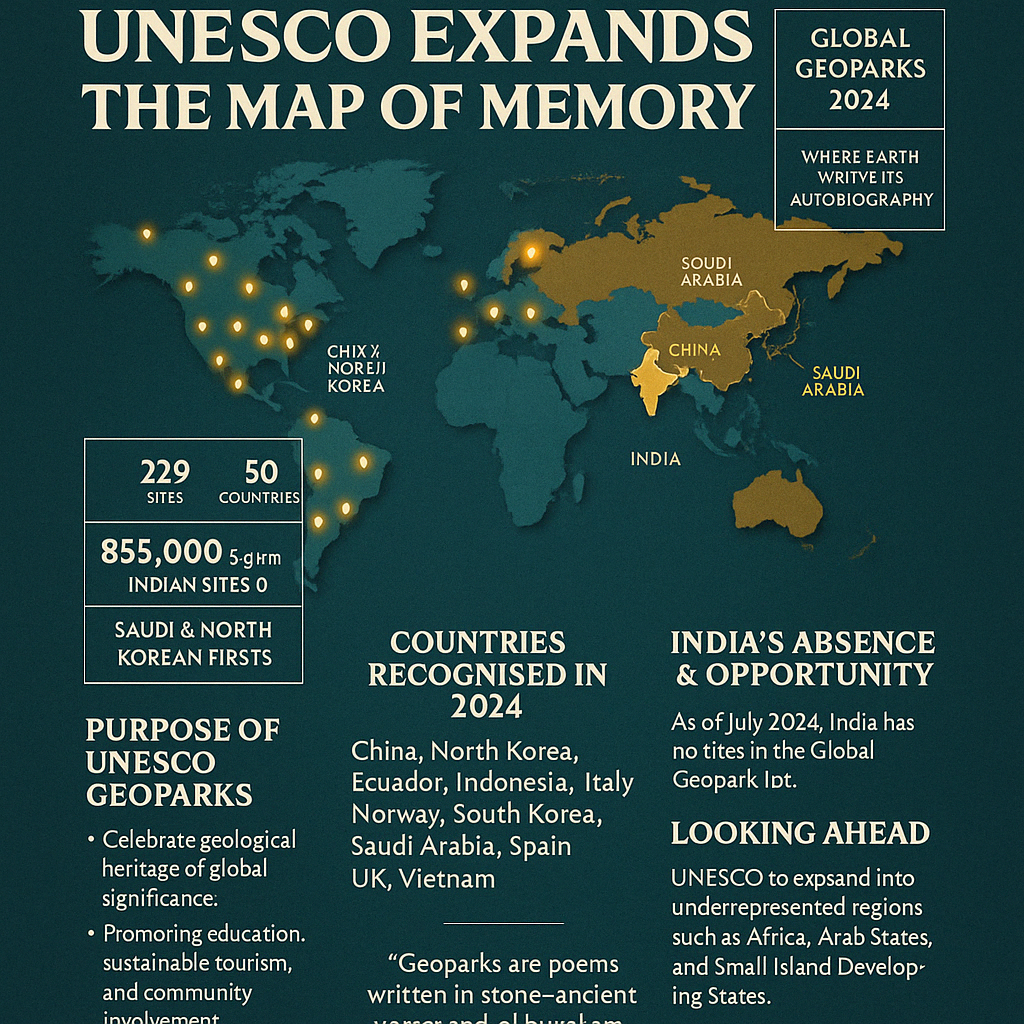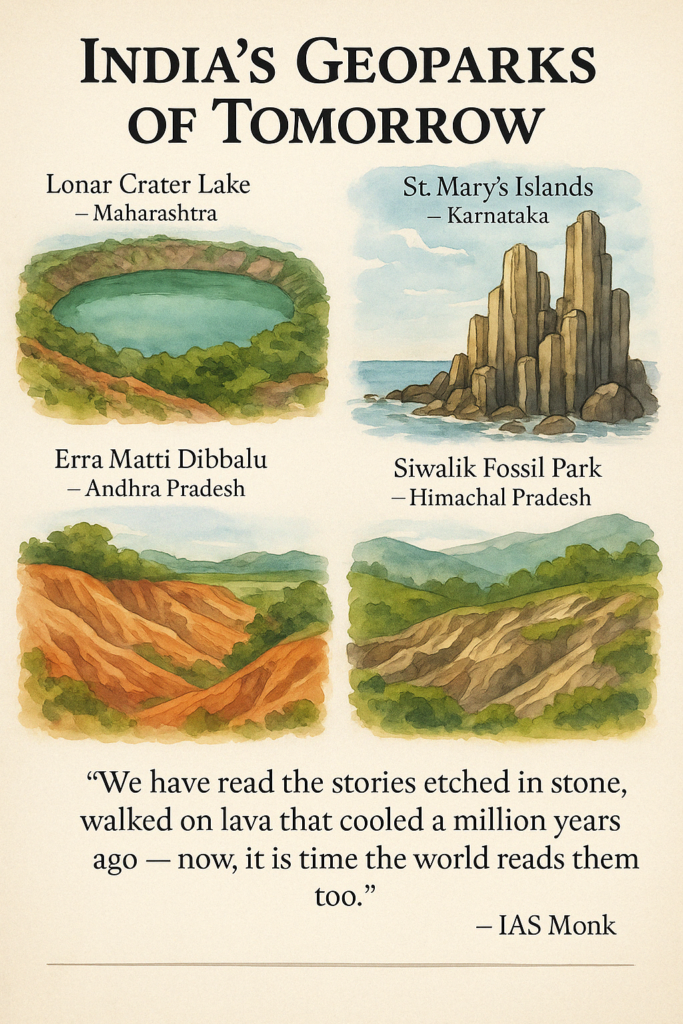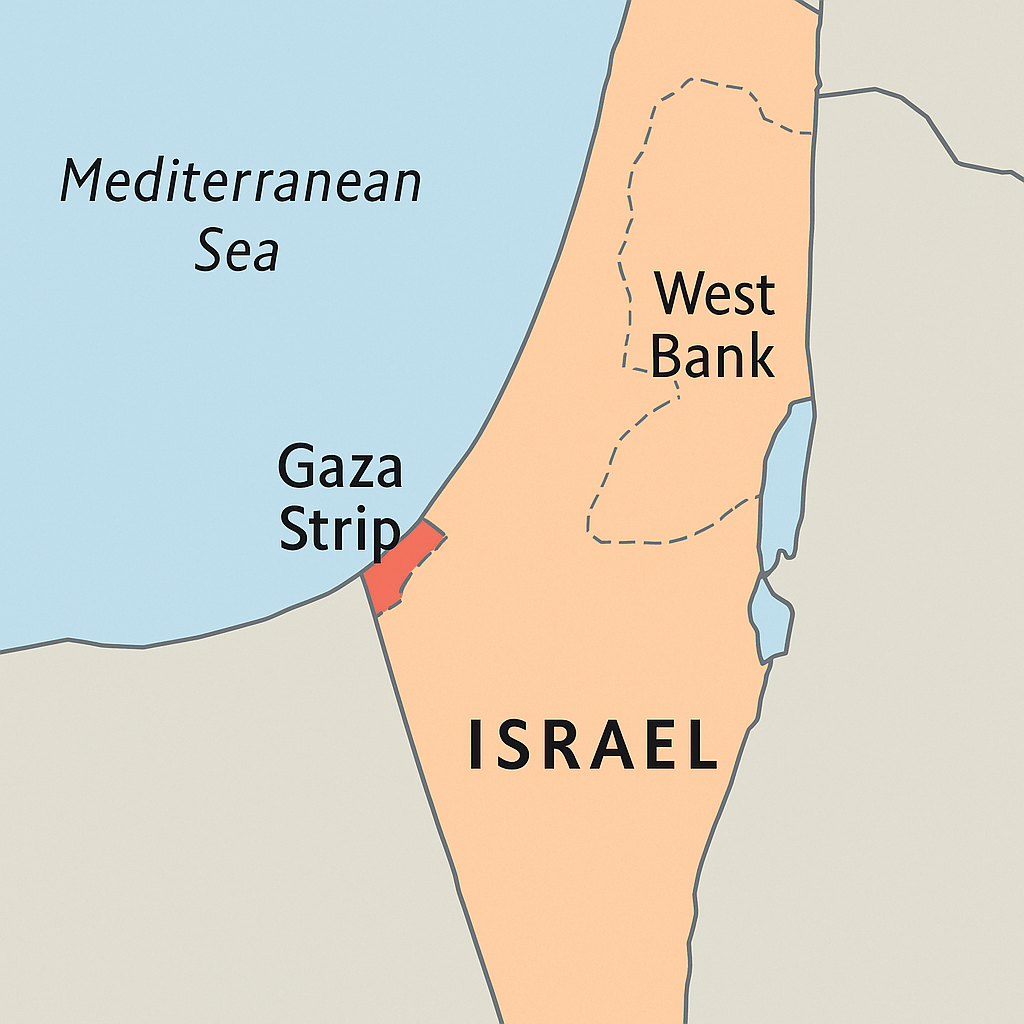
004-Apr 21, 2025
“Stone Scrolls of the Earth: UNESCO Expands the Map of Memory”; Why India is Not in the List Yet?

🌋 Thematic Focus
Category: Geography | Environment | Global Heritage
“Global Geoparks 2025: Where Earth Writes Its Autobiography”
Includes: 229 sites in 50 countries, 855,000 sq. km total, 0 Indian sites, and 2 Saudi + 1 North Korean firsts.
📌 Key Highlights
- UNESCO’s New Geopark Additions
- 16 new geoparks added across 11 countries, including first-ever entries for North Korea and Saudi Arabia.
- The network now includes 229 geoparks across 50 countries, covering 855,000 sq. km (size of Namibia).
- Countries Recognised in 2025:
- China, Ecuador, Indonesia, Italy, Norway, South Korea, Spain, UK, Vietnam, and debutants North Korea & Saudi Arabia.
- Purpose of UNESCO Geoparks
- Celebrate and protect geological heritage of global significance.
- Promote education, sustainable tourism, and community involvement.
- Examples like Katla Geopark (Iceland) show how students & locals participate in research.
- India’s Absence & Opportunity
- As of July 2024, India has no sites in the Global Geopark list.
- A call for India to propose its geologically rich regions (e.g., Deccan Traps, Aravalli Range) for future consideration.
- Looking Ahead
- UNESCO seeks to expand into underrepresented regions like Africa, Arab States, and Small Island Developing States.
🧠 Concept Explainer
What Are Global Geoparks?
A UNESCO Global Geopark is not just a beautiful landscape. It’s a living museum, a classroom beneath the sky, and a bridge between ancient earth memory and modern community life. These sites link geology with people — helping us remember that the ground beneath our feet tells stories, if only we choose to listen.
🌍 What Is a UNESCO Global Geopark?
A UNESCO Global Geopark is a unified area that showcases geological features of international significance, while also integrating education, sustainable tourism, community development, and cultural preservation.
🧭 Criteria for Inclusion in the Geopark Network
UNESCO sets strict and multilayered criteria before granting Global Geopark status:
1. Geological Heritage of International Significance
- Must contain geological formations, fossils, rocks, or landforms that tell the story of Earth’s history or evolution.
- Example: Volcanic fields, ancient glacial systems, tectonic fault zones.
2. Clear Boundaries and Adequate Size
- The site must have defined boundaries and enough space to sustain geological, ecological, cultural, and tourism activities.
3. Sustainable Local Development Strategy
- The area must promote sustainable tourism, eco-education, and community-based development.
4. Active Local Involvement
- Local communities must play a role in preserving the site, conducting educational activities, and reaping economic benefits.
5. Existing Protection Status
- The area should already be protected through national laws or conservation measures.
6. Strong Management and Funding
- There must be a governing body, sustainable financing, and a well-drafted management plan.
7. Education and Research Focus
- Should promote scientific research, geotourism, and outreach programs for students and visitors.
🇮🇳 Why Is India Not Yet on the List?
Despite enormous potential, India has zero Global Geoparks as of 2025. Reasons include:
1. Lack of National Geopark Framework
- India does not yet have a formal policy or law dedicated to identifying and conserving potential geopark sites.
2. Administrative and Bureaucratic Delays
- Proposals have been made (e.g., Erra Matti Dibbalu, St. Mary’s Island, Lonar Crater), but lack coordination between Geological Survey of India, MoEFCC, and UNESCO application protocols.
3. Low Community Involvement
- UNESCO values grassroots participation. Many Indian proposals fall short on community-driven eco-tourism or education integration.
4. Limited Awareness & Funding
- Geoparks are often misunderstood as simply geo-tourism sites. India still lacks the multi-disciplinary, conservation-education-tourism model that UNESCO expects.
5. Confusion with UNESCO World Heritage Sites
- India has 42 UNESCO World Heritage Sites, and focus often stays there. But Geoparks are a separate designation focusing more on earth science and community synergy.
🏞️ India’s Hidden Geopark Gems (with Huge Potential)

Here are a few world-class geological treasures India could nominate:
- Lonar Crater Lake (Maharashtra) – Hyper-velocity meteor impact structure.
- St. Mary’s Islands (Karnataka) – Columnar basaltic lava formations.
- Erra Matti Dibbalu (Andhra Pradesh) – Rare red sand dunes from the Pleistocene era.
- Siwalik Fossil Park (Himachal Pradesh) – Fossils from 1.5–2.5 million years ago.
- Bhedaghat Marble Rocks (Madhya Pradesh) – Gorge of glistening marble cliffs on the Narmada.
🛤️ What Can India Do Now?
To enter the Geopark map:
- Launch a National Geopark Mission.
- Nominate geologically significant sites with integrated development plans.
- Engage local communities and schools.
- Create geopark-ready infrastructure and awareness.
💭 Closing Whisper by IAS Monk
“We have read the stories etched in stone, walked on lava that cooled a million years ago — now, it is time the world reads them too.”
📜 GS Paper Mapping
- GS Paper I:
- Geography: Geological Formations, Natural Heritage
- Culture: Heritage Conservation, Global Recognition
- GS Paper III:
- Environment: Sustainable Development, Ecotourism
- Biodiversity: Geodiversity and Landscape Management
✍️ Essay Paper Mapping
- “When Rocks Speak: Preserving Earth’s Heritage through Geoparks”
- “Between Lava and Legend: Landscapes as Storytellers of Time”
- “Recognition and Responsibility: India’s Missing Footprint in Global Heritage”
💭 A Thought Spark — by IAS Monk
“Geoparks are poems written in stone — ancient verses etched by volcanoes, rivers, and glaciers — waiting for us to read them aloud to the future.”


















